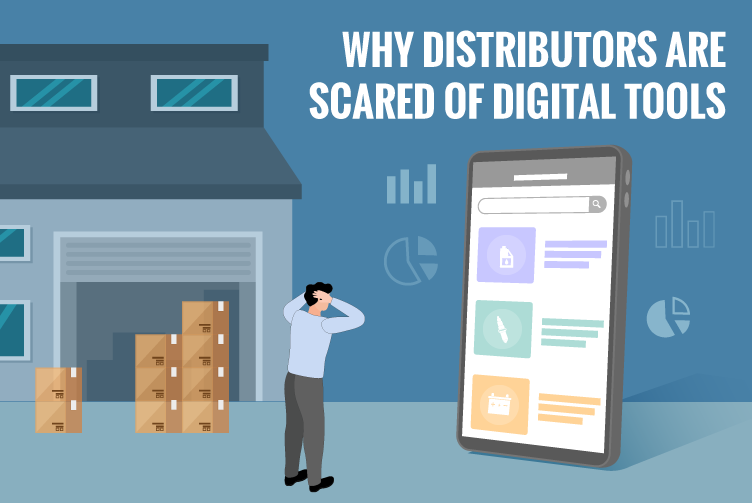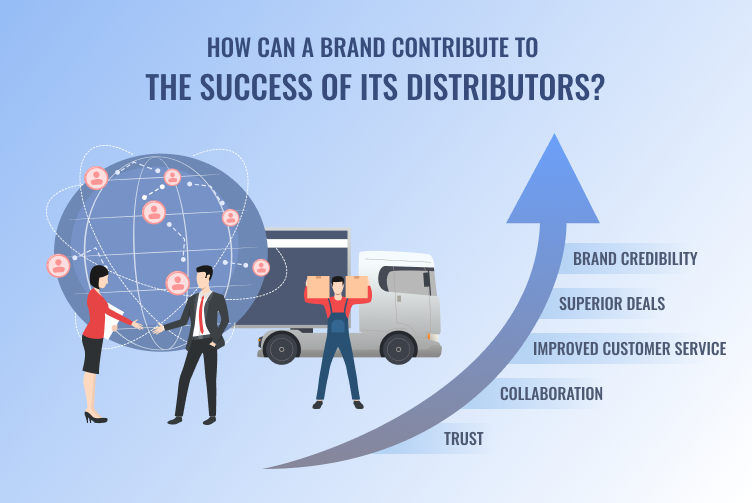There was a time when manufacturers relied on distributors to sell their products to customers across different geographies.
Today, the Direct-to-Consumer (D2C) model has reduced the manufacturer and retailer’s dependency on distributors. They have built their own distribution network and started selling products to consumers directly, which has impacted the distributors in some way.
Distributors are also facing other challenges, such as disruption in the supply chain due to the pandemic, operational inefficiencies, and demand for quick services from customers.
The omens are clear. Distributors will need to up their efficiency and boost their effectiveness across functions to survive and grow.
One principal obstacle to those goals is they still use legacy systems and outdated processes to manage sales and operations. Manual processes are time-consuming and error-prone. Also, data silos and lack of collaboration between the teams make it hard for distributors to sell more, collect faster, and operate efficiently.
Digital tools are the need of the hour for distributors to improve their operations and streamline processes. Distributors can automate their processes, predict customer needs better, and optimize inventory.
However, distributors are scared to go digital.
Why Are Distributors Scared Of Digital Tools?
1. Inability to strategize digital transformation
Distributors are unable to visualize the transformation holistically. Even when they do look at digital tools, it’s in silos or as an investment to fix a specific point problem. But digital transformation delivers maximum impact when the ultimate strategy is to go beyond just short-term improvements. Distributors must have a clear understanding of the pain points to solve, the impact on the workforce, how it will fit into the entire ecosystem of the existing operational tools, etc. The whole process of strategizing can sometimes be overwhelming for distributors. They might also be scared of failure. However, to harness the potential of digital tools and make the digital transformation successful, distributors need a well-defined strategy.
2. Fear of changing legacy systems and processes
While we are on the subject, we must also talk about the fear of the unknown. Change can be frightening, especially in distribution, as a single error or an unpredicted change could have a domino effect on the entire supply chain. Distributors are accustomed to using simple, sometimes manual, tools and following processes that have been practised for decades. Adopting modern tools would mean changing the processes and workflows and unlearning the old ways of working. There is also the fear that automation could replace key elements of the human workforce. Distributors must implement change management carefully and communicate with the workforce to alleviate their concerns and ensure a smooth transformation. The workforce must be trained thoroughly to help them adapt to the new systems and processes quickly.
3. Lack of Business-IT alignment
IT teams are good at analyzing the available digital tools and choosing correctly. But not many distributors have functioning IT teams. The entire exercise could also fail without coordination between the IT and business leaders in the selection and transformation process. Often, the IT and business teams work in silos. Without collaboration, one cannot reach a consensus. The IT team will have to consider the pain points and demonstrate the value of digital tools to convince the business leaders to embrace it. They must address the workforce’s questions and ensure that everybody is aligned with the objective of transformation.
4. Integration issues
Typically, distributors use multiple tools, especially those provided by product principals, to manage routine tasks and gather data. But since these tools operate in silos, the data is never available in a consolidated manner. The distributors do not have a single source of truth that they can use to make decisions. The new digital tools allow distributors to integrate and aggregate data across multiple systems and gain a 360-degree overview of their business. However, integrating the old and new tools can be a challenge. Distributors also fear losing data during the integration or migration process. That’s why distributors must discuss safeguarding data with their IT team and technology partners. They must choose digital tools that can integrate seamlessly with the old ones and ensure smooth data exchange between them.
5. Change in reporting
As distributors expand their reach to new geographies, they may need more sophisticated tools with advanced and intuitive reporting capabilities. Tools should capture data in real-time and help them make accurate decisions. However, distributors fear that a new tool may not offer them the same template as the existing ones. The existing ones allow them to follow their own reporting style. Distributors may also forget to update the tool with the latest data on a busy day, impacting the report’s authenticity. The new tools must help address these challenges and simplify the process of capturing and reporting real-time data to improve decision-making.
6. Lack of localization
Most distributors, especially in the APAC region, understand regional languages or languages used in the areas they do business. They need tools that provide multi-lingual support. This lack of localization could impact their daily operations and complicate the processes further as they will have an additional task of understanding the tool and using it correctly. It can be tedious and time-consuming. Therefore, it’s critical to choose a tool that offers localization and is simple to use.
Why Should Distributors Embrace Digital Tools?
Digital tools are not the problem. The key is to choose the right tool and implement it well. Distributors must overcome their fears and adopt new tools to improve their business. They must choose a tool that’s easy to use and solves their existing challenges.
If used correctly, these tools can provide real-time insights into all the departments in a single platform and empower the distributors to optimize their business workflows and make informed decisions.
We build such solutions and tools to help distributors transform their business and keep pace with the changes in the market.
To know more, contact us.




